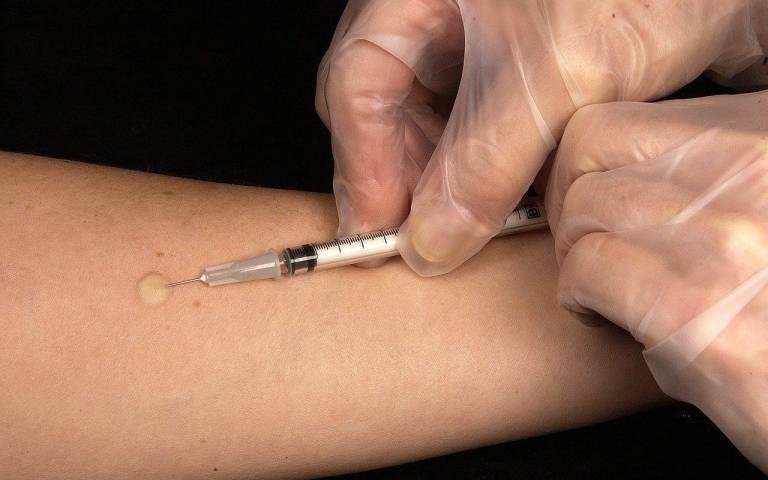Risk predictor could eliminate TB in countries with low transmission
20 October 2020
A new online tool which could help eliminate tuberculosis in countries with low transmission rates such as the UK, by identifying who is at highest risk of developing TB, has been developed by UCL researchers.

The research, published today in Nature Medicine, is the largest study of its kind and pooled data from 18 previous studies and 20 countries including the UK and from across Western Europe, North America and Australia.
People who have ‘latent’ TB may have TB bacteria in the body, but it is not active and they cannot pass it on. For the first time, the tool can provide clinicians and individuals personalised risk predictions by assessing how likely latent TB is to develop into active TB - which can be fatal.
The researchers were able to look at data from over 80,000 people who were tested for latent TB and followed to see whether this then developed into active TB within five years of testing. They were then able to develop a risk predictor to calculate how high the risk of developing active tuberculosis is, based on factors such as age and previous contact with people with TB.
The treatment for latent TB is currently an intensive antibiotic course for three months and the tool will help to target these antibiotics towards those who need them the most, while protecting those who are less likely to benefit from the treatment and save them from potential side effects.
Dr Rishi Gupta (UCL Institute of Global Health), lead author, explained: “TB prevention should be a major priority for the UK and other Western European countries. Current tests to predict who will develop active TB are not very accurate. Many people who have a positive test result will not get active tuberculosis even without preventive antibiotic treatment.
“In addition, the risk of becoming unwell with TB also depends on many factors such as age – for example, we know that young children with a positive test result have a significantly higher risk of developing TB disease than adults. Until now, it has not been possible to predict how high the risk of developing tuberculosis is in individual cases.”
“If we can identify people at highest risk of TB disease, we can treat their infection with preventative antibiotics, before they become unwell. By pooling information from thousands of individuals at risk of TB, we have developed a new prediction tool (PERISKOPE-TB), to help doctors give preventative treatment to those that will gain the most benefit.
The tool could also provide a framework through which to aid prevention in countries with higher transmission rates. Corresponding author, Professor Ibrahim Abubakar (Director of the UCL Institute for Global Health) said: TB kills over a million people each year globally and up to one in four people worldwide may have TB infection. Unfortunately, our ability to identify who will benefit from these preventive treatments is hampered by the poor prediction ability of the diagnostic tests available.
“One of the main solutions available to prevent TB, and consequent avoidable loss of life, is treatment with one or two antibiotics and this tool would far more effectively be able to identify who needs this treatment.”
Primarily, the authors say the tool is designed to help assess people who may have come into contact with TB and for those from countries with high transmission rates, as well as vulnerable and hard to reach groups. They hope to extend the work in the future by assessing its accuracy in new settings, and by also making it applicable to countries with high transmission.
The research was funded by the National Institute of Health Research (NIHR).
Links
- Professor Ibrahim Abubakar's academic profile
- UCL Institute for Global Health
- Dr Rishi Gupta's academic profile
- Paper in full
- PERISKOPE tool
Image
Credit: WikiImages via Pixabay (CC by 2.0)
Media Contact
Rowan Walker
Tel: +44 (0)20 3108 8515
Email: rowan.walker [at] ucl.ac.uk
 Close
Close

